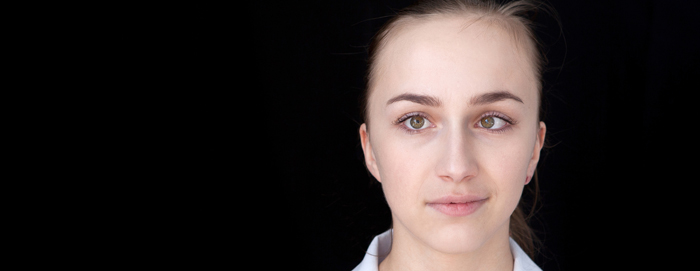Cross Eye Treatment in Koramangala, Bangalore
Cross eye is also known as strabismus. It is a condition wherein the eyes tend to look in different directions. It is a fairly common problem.

What do we need to know about cross eye?
There are usually six muscles that control the movement of the eyes, and these muscles can malfunction and hence, a patient cannot maintain his or her normal eye alignment or position.
Strabismus can be categorized by the direction in which the eye is turned or misaligned:
- Inward turning - esotropia
- Outward turning - exotropia
- Upward turning - hypertropia
- Downward turning - hypotropia
So, how is strabismus diagnosed? Usually, infants above the age of four months are taken to a pediatric ophthalmologist. Physical examination is then performed along with a complete eye examination. Patient history, visual acuity, refraction, alignment test, focus test and dilation testing are done to determine proper eye alignment.
To know more, you can search online for an ophthalmology hospital near me or an ophthalmology doctor near me.
What are the types of cross eye or strabismus? And what is the treatment option for each?
- Accommodative esotropia - It usually occurs because of a genetic predisposition for the eyes to turn inwards. The symptoms include double vision, tilting or turning the head when looking at something nearby. It usually starts in the early years of life. It may be treated with glasses and sometimes requires an eye patch or a surgery for the muscles of the eyes.
- Intermittent exotropia - In this type of strabismus, one eye focuses on an object and the other eye points in an outward direction. Symptoms include double vision, headaches, difficulty in breathing. It can happen at any age and the treatment usually involves glasses, eye patches, eye exercises or surgery of the eye muscles.
- Infantile esotropia - It is usually a condition wherein the eyeballs turn inwards. It usually starts before 6 months of age. The treatment is surgery to correct the alignment of the eyes.
What are the causes of strabismus?
Strabismus usually results from an abnormality in the neuromuscular controlling of the eyes. Our understanding of this condition is very limited. In most cases, it is inherited or occurs because of genetic conditions.
When do you need to see a doctor?
Strabismus usually appears in infants and toddlers under the age of 3. This does not eliminate the possibility of development of strabismus in adolescent kids or adults. You should consider talking to your healthcare provider if your child develops double vision or any other symptom of strabismus.
You can request an appointment at Apollo Spectra Hospitals, Koramangala, Bangalore.
Call 1860 500 2244 to book an appointment.
What are the complications?
These include:
- Poor vision
- Refractive error
- Stroke
- Brain tumors
- Graves disease
- Neurological problems
- Cerebral palsy
- Head injuries
What are the basic treatments for strabismus?
- Eyeglasses - Used in patients who have refractive errors that are uncontrolled. The corrective lens makes the eye put less effort in making the alignment straight.
- Prism lenses - These are usually special lenses that are used to bend the light that enters the eye so the amount of turning that has to be done by the eye to look at objects reduces.
- Eye exercises - These are also called orthoptics, may work in certain conditions of strabismus, especially in multiple conditions of exotropia.
- Medications - Eye drops or ointment can be applied and prescribed to patients depending on the situation or need for surgery.
- Eye muscle surgery - This is usually done to completely change the length or position of the eye muscles. The surgery is performed under general anesthesia. Surgery is done to correct the alignment of the eyes.
Conclusion
It is wrong to assume that children will outgrow strabismus. If your child develops any sort of signs and symptoms of strabismus, then it is important to contact your healthcare provider because it will get worse if not treated.
The patient will usually have to see the doctor for a follow-up. This is done to basically see if the patient is responding to the treatment and to make adjustments in the treatment if required.
With proper diagnosis of strabismus at an early stage and proper treatment, a child may develop excellent vision and depth perception.
Adults can also have strabismus. It usually occurs because of an after-effect of stroke or physical trauma that has not been treated.
Symptoms
Our Doctors
DR. SHALINI SHETTY
MBBS, MS (Ophthalmol...
| Experience | : | 30 Yeras Experience |
|---|---|---|
| Speciality | : | Ophthalmology... | Location | : | Koramangala |
| Timings | : | Available by prior a... |
Our Top Specialities
NOTICE BOARD
CONTACT US
CONTACT US
 Book Appointment
Book Appointment



.svg)
.svg)
.svg)
.svg)








